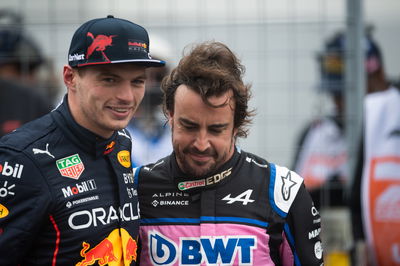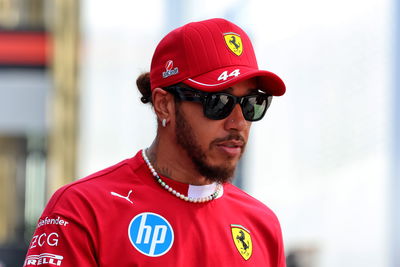Wolff blasts rivals 'pitiful' behaviour in F1 bouncing row
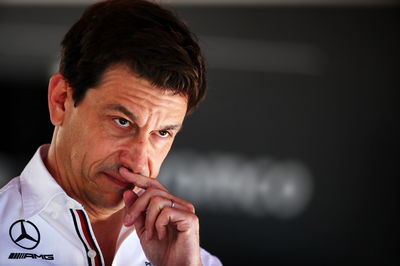
Ahead of this weekend’s Canadian Grand Prix, the FIA issued a technical directive that intends to combat the extreme bouncing experienced in F1’s new-generation cars that has left the drivers concerned about the long-term impact on their health.
It came less than a week after Lewis Hamilton was left walking gingerly away from his Mercedes car following the Azerbaijan Grand Prix, having suffered from “excruciating” lower back pain throughout the 51-lap race.
- Horner: FIA’s porpoising F1 directive ‘dangerous’, unfair to change rules
- Hamilton and Verstappen disagree over FIA's porpoising rule
- Could FIA porpoising intervention be bad news for Mercedes?
The FIA’s intervention has split the F1 paddock, with several drivers backing the steps taken to improve the situation, while others are unhappy, with Red Bull team boss Christian Horner blasting the move to introduce changes mid-season as “very unfair”.
Mercedes upset Alpine by running a second floor stay on their cars during Friday practice, despite the late notice of the FIA’s short-term measures and advisory TD. The reigning world champions chose to remove the additional stay amid questions from rivals about a potential protest.
Following heated discussions with rival team bosses in a meeting in the Montreal paddock on Saturday, Wolff hit out at their "pitiful" behaviour.
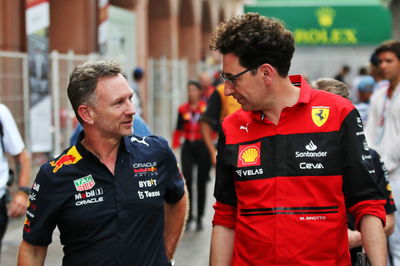
“This is a sport where you're trying to either keep a competitive advantage or gain it, but this situation has clearly gone too far,” said Wolff.
“All drivers - at least one in every team - have said that they were in pain after Baku, that they had difficulty in keeping the car on track, or blurred vision.
"And team principals trying to manipulate what is being said in order to keep the competitive advantage and trying to play political games when the FIA tries to come up with a quick solution to at least put the cars in a better position is disingenuous.
“All of the cars, because I'm not only talking about the Mercedes, all of the cars suffered in some way or other in Baku, and still do it here. The cars are too stiff or the cars bounce, whatever you want to call it.
“As a matter of fact, this is a joint problem we are having in Formula 1. It's a design issue and not a fundamental design issue that needs to be solved.
“We have long-term effects that we can't even judge. But at any time this is a safety risk and then coming up with little manipulations in the background, or Chinese whispers, or briefing the drivers is just pitiful.”
'A design issue of ground effect cars'
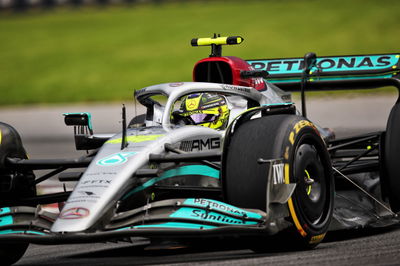
Critics have suggested that Mercedes have only lobbied for the TD because the eight-time constructors’ world champions have struggled the most with porpoising and bouncing.
Horner is among those who have argued that it is wrong to penalise teams that have managed to get on control of the issues. He also pointed out that a simple solution is available - raising the ride height of their cars. However, doing so comes at a performance cost.
Wolff admits Mercedes’ stance has been met with scepticism from their rivals but insists more needs to be done to tackle the issue “before we have a situation”.
“So of course, people will question whether my position is sincere or not,” he said. “That's why I'm saying it's not only our problem.
“But if a Red Bull driver says you reach 300 kilometres an hour, which is when the issue comes up, and with these problems, you can even lose your vision when braking or not being able to position the car properly, said Perez.
“Then you listen to the words of Sainz, you listen to what Ricciardo has said, you listen to what Ocon has said, Magnussen, and both our drivers. This is not a team's problem.
"This is a design issue of ground effect cars that needs to be tackled before we have a situation, whatever it is.
“And it is not just by putting the cars up, because putting the cars up doesn't solve the stiffness of the inherent aerodynamic characteristics."
